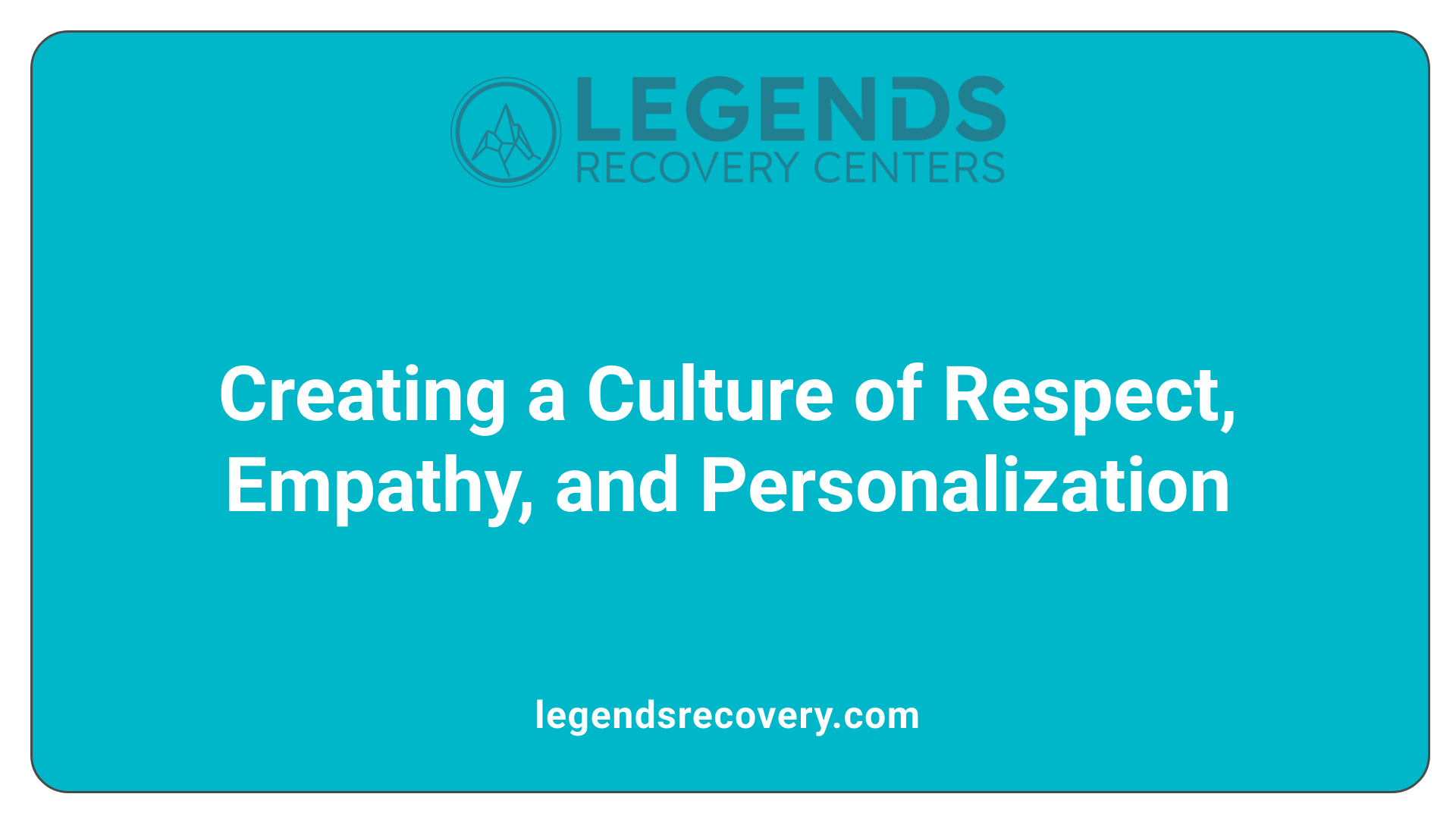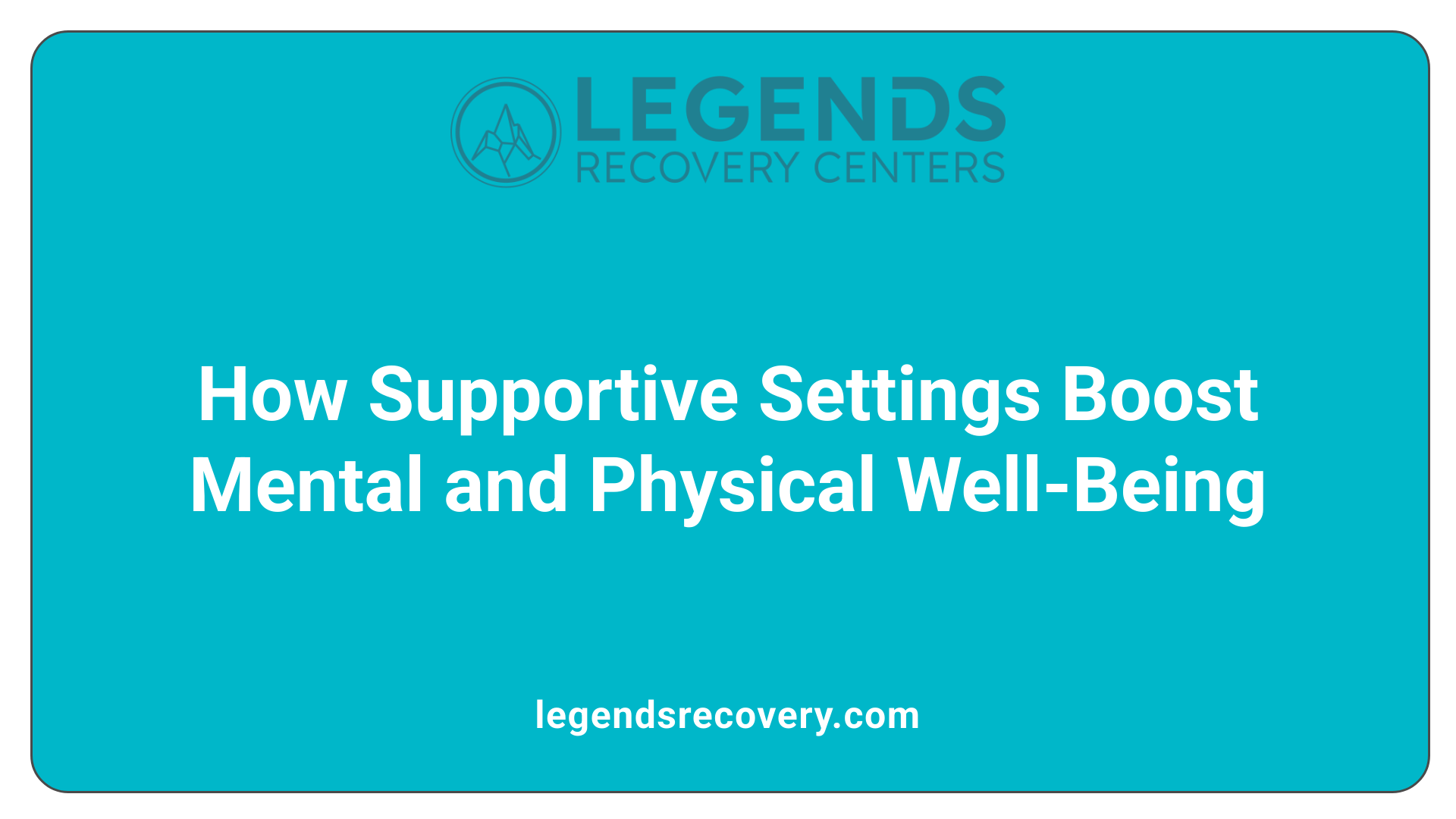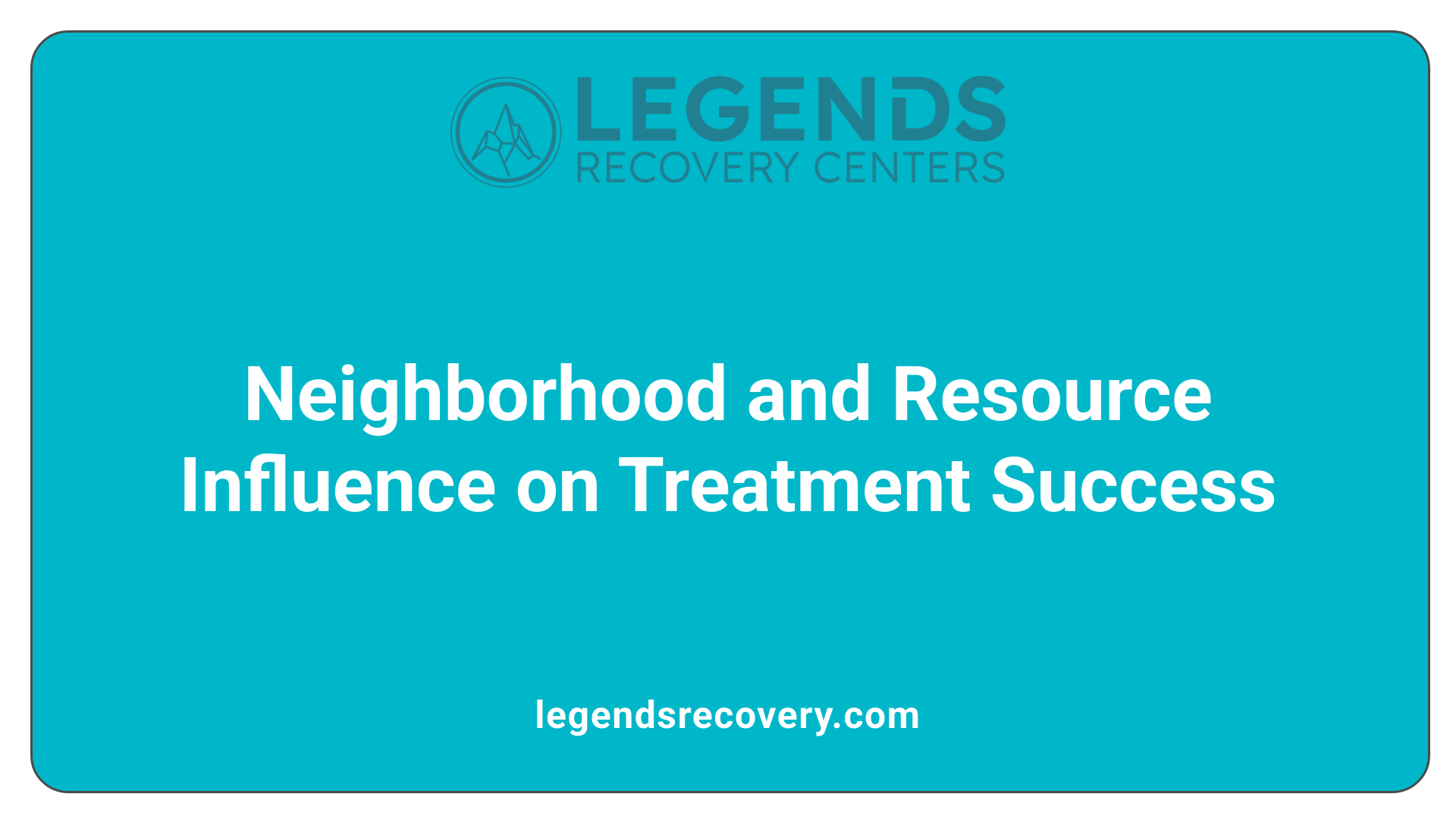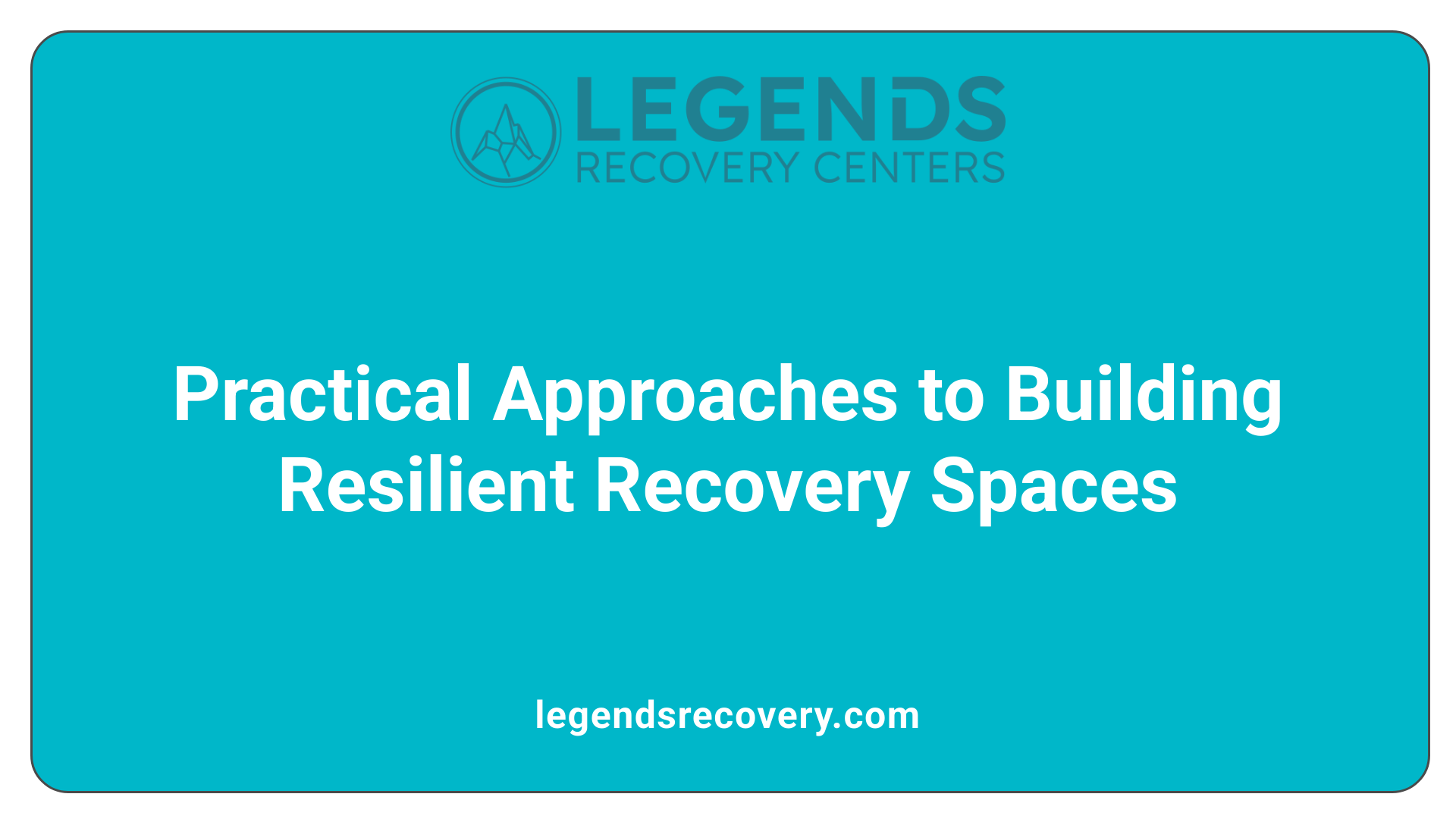Building Foundations for Recovery: Creating Healing Residential Environments

A supportive environment is pivotal in determining the success of residential addiction treatment. From physical spaces designed to foster safety and calmness to social structures that offer emotional stability, the environment where recovery takes place influences outcomes profoundly. This article explores how these multifaceted environments contribute to physical and mental health improvements, support long-term sobriety, and what practical strategies can be employed to create the most effective healing spaces.

An effective supportive environment in residential addiction treatment combines several important elements that promote healing and long-term recovery. Safety and respect are foundational, creating a space where individuals feel secure and valued, which encourages open communication and trust.
Personalized care tailored to each individual's needs, strengths, and cultural background enhances motivation and engagement. Recognizing that each person's journey is unique, treatment plans are adjusted to reflect personal goals and circumstances.
Empathy and non-judgmental relationships with staff and peers are vital. These relationships foster an atmosphere of understanding, allowing individuals to share their experiences without fear of stigma or criticism. Such support networks promote emotional security and resilience.
A holistic treatment approach addresses physical health, mental well-being, and co-occurring disorders. Incorporating activities like therapy, nutrition, exercise, and complementary therapies ensures comprehensive care that supports overall well-being.
Structured routines and community engagement are also crucial. Daily schedules that include therapy sessions, self-care, and recreational activities provide stability. Opportunities for participation in communal activities help rebuild social skills and foster a sense of belonging.
Ongoing support and robust aftercare programs extend the benefits beyond residential treatment. Family involvement, peer support groups, and continued therapy help maintain progress and prevent relapse.
Qualified staff trained in trauma-informed and evidence-based practices create a therapeutic setting focused on empowerment and recovery. Together, these components form an environment that nurtures growth, resilience, and a lasting sober lifestyle.
This comprehensive environment not only supports immediate recovery but also lays the foundation for sustained well-being. It emphasizes trust, personalization, empathy, and community—elements proven to foster successful long-term outcomes in addiction treatment.

Supportive environments are vital in the process of recovery from substance use disorders. They offer a safe, calm, and trigger-free physical space, which reduces stress and creates a sense of stability. Such spaces allow individuals to focus on healing without the distraction of environmental cues that may prompt cravings or relapse.
By fostering positive mental states, these environments help diminish feelings of anxiety, depression, and hypervigilance. They also mitigate the impact of unresolved trauma and negative peer influences, laying a strong foundation for both mental and physical wellness.
In addition to the physical setting, social support plays a crucial role. Peer groups, family involvement, and community connections provide validation, encouragement, and understanding. These social networks boost self-esteem and promote accountability in recovery.
Engagement in holistic activities like exercise, mindfulness, and therapeutic hobbies further enhances physical health and emotional resilience. Access to healthcare, counseling, and social services addresses broader needs, supporting overall well-being.
Ultimately, such environments foster resilience, facilitate personal growth, and sustain recovery by integrating safety, social support, and health-promoting activities. This comprehensive approach significantly increases the likelihood of long-term success in overcoming addiction.

Environmental factors play a crucial role in shaping the outcomes of addiction treatment. The safety and resources available within a community directly affect an individual's ability to maintain recovery and avoid relapse.
Disadvantaged neighborhoods often contain high densities of alcohol and tobacco outlets, as well as advertising that promotes substance use. These environments can increase exposure to triggers and elevate the risk of relapse. Social disorder, including crime and violence, further diminishes the safety and supports necessary for recovery.
Conversely, neighborhoods that offer access to recreational spaces, community centers, and healthcare resources foster healthier living conditions. Such environments encourage physical activity, social engagement, and access to supportive services, which aid in treatment adherence and sustain long-term recovery.
Socioeconomic and racial disparities often restrict marginalized groups' access to quality treatment options and supportive resources. Limited availability of affordable housing, employment opportunities, and healthcare can hinder recovery efforts.
Creating and maintaining resource-rich, safe, and supportive environments are essential strategies for improving treatment success rates and reducing relapse. Efforts to address neighborhood disadvantages and promote equitable resource distribution are vital components of effective addiction care.
| Aspect | Impact on Treatment Success | Additional Details |
|---|---|---|
| Community safety | Reduces exposure to triggers and stressors | Safer neighborhoods support recovery environment |
| Resources and accessibility | Provides necessary support and treatment options | Access to healthcare, recreational, and social services |
| Neighborhood influences | Shapes social norms and exposure to substances | Social disorder can hinder recovery efforts |
| Societal and socioeconomic barriers | Limit access for marginalized populations | Economic and racial inequities restrict treatment access |
A holistic approach that improves neighborhood conditions and ensures equitable resource distribution can significantly contribute to better addiction treatment outcomes.

Building a nurturing and effective residential treatment environment involves several practical approaches. Foremost, fostering a culture of compassion and inclusivity encourages clients to feel valued and understood, which promotes trust and openness.
Personalized interventions are crucial. Tailoring treatment plans to individual needs—considering personal history, cultural background, and specific recovery goals—helps clients engage more deeply with their recovery process.
Incorporating holistic therapies addresses not just substance use but also physical, emotional, and mental health. These can include nutritional support, mindfulness practices, art therapy, and physical activity, all designed to promote overall well-being.
Creating a calming physical environment also plays a vital role. Spaces designed with natural light, soothing colors, and access to nature can reduce stress and foster relaxation. Activities like outdoor walks or garden therapy integrate the healing power of nature.
Peer support networks and family involvement strengthen social bonds and create a sense of community. Encouraging participation in group therapy and family education sessions fosters understanding, accountability, and emotional backing.
Equally important is staff training. Educating staff on addiction specifics, trauma-informed care, and cultural competence equips them to handle diverse needs effectively while reducing stigma.
Policy flexibility—such as providing childcare services, allowing personalized routines, or accommodating cultural and religious practices—also enhances the supportive atmosphere.
Collectively, these strategies create a resilient, empathetic setting where clients feel safe and empowered, significantly improving their chances for lasting recovery.
Social support is a fundamental factor in overcoming addiction. It involves emotional guidance, tangible resources, and encouragement obtained through relationships with family, friends, peers, and participation in organized groups.
Having a reliable network helps individuals feel connected and understood, reducing feelings of isolation that often accompany recovery. This sense of belonging boosts motivation and self-efficacy—believing in one's ability to stay sober.
Participation in mutual help groups like Alcoholics Anonymous (AA) and recovery homes such as Oxford Houses provides structured social environments that reinforce abstinence. These groups offer peer support, shared experiences, and accountability, which are linked to higher sobriety rates and better quality of life.
Family support also plays a vital role. Educating and involving loved ones fosters understanding, reduces stigma, and creates a supportive home environment conducive to sustained recovery.
At a broader level, ongoing support helps maintain healthy behaviors, encourages treatment retention, and provides emotional stability. This ongoing connection is essential for managing stress and preventing relapse.
In summary, robust social support networks contribute significantly to long-term sobriety by promoting emotional resilience, providing essential resources, and fostering a community of encouragement. These elements are crucial for sustaining recovery milestones and building a healthy, substance-free life.
For more insights, searching
Social support plays a vital role in the recovery process by offering emotional guidance, encouragement, and tangible resources that help individuals manage stress and embrace healthy behaviors. When people feel supported, they are more likely to stick with treatment plans and develop resilience.
Participation in community-based groups such as Alcoholics Anonymous (AA) provides a sense of belonging, which boosts confidence and motivation to stay sober. These groups facilitate shared experiences, allowing individuals to learn from others’ journeys, fostering a sense of camaraderie and mutual understanding.
Support networks from family, friends, and recovery housing also help reduce feelings of isolation that can often trigger relapse. They reinforce positive behaviors through praise and accountability, helping individuals rebuild self-esteem and develop coping skills.
Evidence indicates that higher perceptions and actual levels of social support correlate with lower substance use, fewer relapse episodes, and better overall mental health. This creates a reinforcing cycle—strong support systems boost self-efficacy, which in turn sustains abstinence.
In summary, fostering a supportive environment through peer connections, family involvement, and community resources enhances recovery by promoting emotional stability, encouraging continued engagement in treatment, and helping individuals navigate the challenges of sobriety. Such an environment builds resilience, reduces relapse risks, and sustains long-term recovery efforts.
A stable and safe housing environment is a cornerstone of effective addiction recovery. It offers individuals a secure space free from the triggers and stressors that can lead to relapse. When housed in a supportive setting, individuals can focus more fully on their treatment goals and build essential coping skills.
Research shows that living in sober, structured environments, such as recovery homes or sober living houses, significantly improves treatment retention and long-term sobriety. These environments foster accountability and social support—crucial factors in maintaining abstinence. Additionally, a safe environment prevents the chaos and destabilization often associated with homelessness or unstable living conditions, which can undermine recovery efforts.
Programs like Housing First and specialized recovery housing emphasize providing secure, substance-free living spaces. Such models have demonstrated success in reducing substance use and relapses, and in supporting ongoing engagement with recovery services. Overall, establishing a stable foundation through appropriate housing greatly enhances the chances for sustained sobriety and a healthier lifestyle.
The development of a comprehensive, nurturing environment—both physically and socially—is foundational in supporting individuals through their journey of addiction recovery. By prioritizing safety, respect, personalized care, and robust social support systems, residential treatment centers can enhance treatment adherence, reduce relapse risks, and foster long-term sobriety. Incorporating holistic therapies, engaging families, and cultivating community connections further reinforce these benefits, ensuring that recovery is both sustainable and empowering. Ultimately, a supportive environment transforms the recovery process from a challenge into an achievable and hopeful path toward wellness.